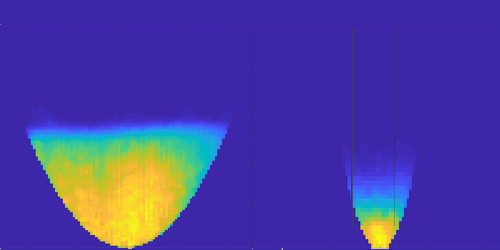Coldest Electrons Ever from Photocathodes
When probing ultrafast phenomena with electron beams, a brighter beam means higher temporal and spatial resolution. One key factor in increasing brightness is reducing the average transverse energy of the electrons in the beam, which is equivalent to reducing the electrons’ temperature. Now, in a photoemission experiment on cryogenically cooled copper—a material used to make electron beams for photocathodes—Siddharth Karkare at Arizona State University, Tempe, and colleagues have generated electrons that are 4 times colder than those made using other photocathode materials.
Photocathodes are typically made from polycrystalline metals, such as copper (Cu), or from semiconductor materials, such as gallium arsenide. When illuminated with a laser beam, those cathodes emit electrons with transverse energies of several hundred milli-electron-volts (meV). To reduce that value, researchers can cool the cathode, remove surface nonuniformities in the metal or semiconductor, and use single-crystalline materials. Using these methods, previous experiments have generated electrons with transverse energies as low as 25 meV. Karkare and his colleagues wondered if they could reduce this value further by cooling the cathode material to cryogenic temperatures. The team choose single-crystalline Cu(100) because its electronic structure confines the electrons’ transverse momentum, and it is easy to prepare.
The team cooled the Cu(100) to 35 K, focused a laser on the sample, and measured the travel time and transverse position of the photoemitted electrons as they struck a detector. Their measurements show that a beam can be generated with an average transverse energy of 5 meV, and a record-low total energy spread of less than 11 meV. Karkare says that result provides a path toward improving photocathode electron sources for use in x-ray free electron lasers and in ultrafast electron diffraction, microscopy, and spectroscopy tools.
This research is published in Physical Review Letters.
–Rachel Berkowitz
Rachel Berkowitz is a Corresponding Editor for Physics Magazine based in Vancouver, Canada.




